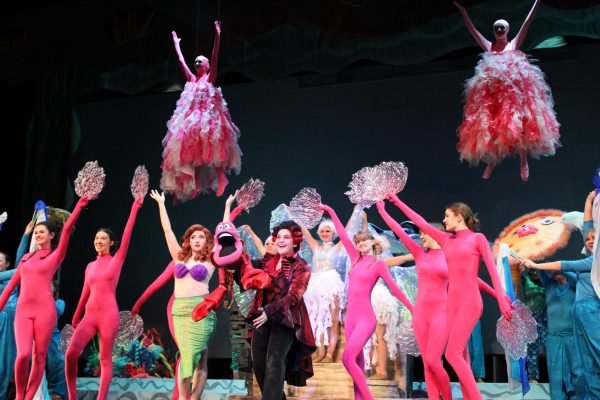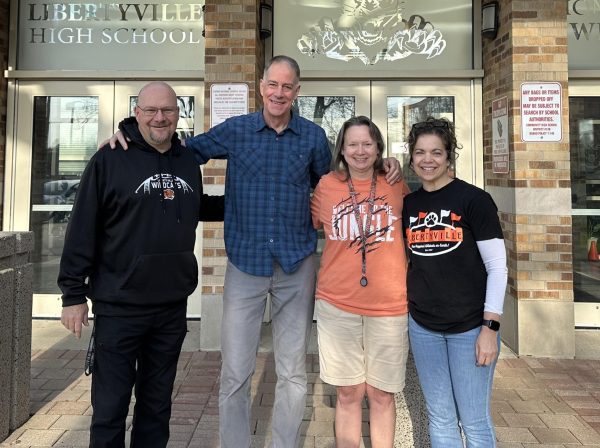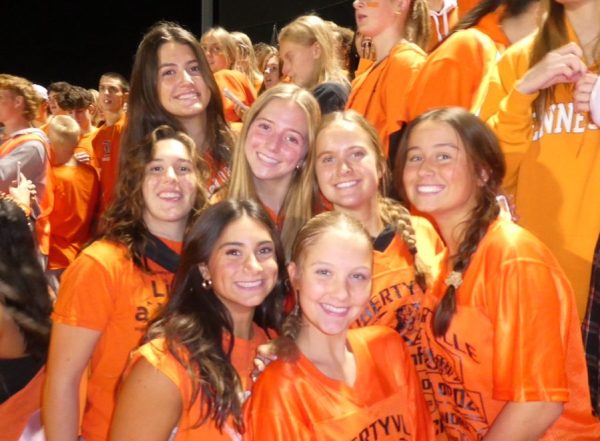Daring to be More Diverse
The majority of students at Libertyville High School are white, 80.7 percent of them to be exact, according to the Illinois School Report Card. Whether you’ve merely ventured the halls during a passing period, or you’re a student here, chances are the homogeneity of the student body is something you’ve taken note of. This pattern is also reflected among teachers and to an even greater degree — 94.6 percent of teachers at LHS are white.
This is not a situation unique to LHS. In fact, according to an article from The Washington Post, the number of students of color outweigh teachers of color in almost all U.S. school districts. The teaching industry is primarily dominated by white women, with 80.1 percent of teachers being white, and 76.6 percent of them being female, as reported by the National Center for Education Statistics in 2016. This is an issue, as “minority students often perform better on standardized tests, have improved attendance, and are suspended less frequently when they have at least one same-race teacher,” according to The Brookings Institution.
Sarah Greenswag, who teaches social studies and identifies herself racially as white, commented on the effects that a lack of diverse representation in media and at the local level can have on students: “I think that it does send certain messages to our students about who has the authority to teach,” she said. “And so I think it can unintentionally or subconsciously promote the idea that only a certain type of person is qualified for this role.”
For this story, Drops of Ink contacted multiple teachers of color, all of whom declined to comment; they expressed discomfort speaking on the topic.
Senior Jada Higgins, who identifies as mixed race, stated that lack of teacher diversity is definitely something she’s noticed at LHS, and she is looking for a way to expose herself to more staff and student diversity in the future by seeking that out in her college search. “I feel like the only thing I’m missing out on in my education — and I’m not saying there’s a hole in my education, or maybe there is and I’ll find out next year — is that different perspective,” she explained.
Higgins also stated that when speaking on racially-charged topics, it can be challenging because most LHS teachers don’t possess the first-hand understanding needed to provide students with an inside perspective. “For example, I know in [English] last year, we talked about police brutality, but it’s from an outsider, saying ‘This is how it is.’ And it never goes deeper than that just because that’s the perspective they can give us.”
Junior Celia McDermott-Hindman, who is white, agreed with this sentiment, saying that teachers at LHS do the best they can to teach students a wide range of perspectives, but having more diversity would help.
Junior Amal Hasan, who is Muslim, also expanded upon the topic of teacher diversity, stating that every teacher she’s ever had has been white. “Having a teacher who [fully] understands that different perspective [would] develop their ethos … [and] really help in their teaching because they’re confident in what they’re saying,” she said.
LHS Principal Dr. Tom Koulentes, who is white, speaking on the topic of teacher diversity at LHS, asserted that “it’s an issue at Libertyville High School and Vernon Hills,” as well as statewide in Illinois. He said that ideally, he would have the ability to create a staff that is representative of the student and community population. He cited the application pool as a challenge, stating “It’s the lack of diverse candidates that apply. And so our task then is how do we get [them] to apply?” He also said that the fact that there are no big colleges near LHS besides Loyola and Northwestern Universities makes it difficult to draw in new applicants.
Dr. Koulentes stated that bringing in diverse staff members is a definite goal for both him and the administration. “Part of our DARING mission…is being global, meaning that we seek out multiple perspectives to make decisions about the world. So in bringing in that diversity, we’re gaining this wisdom of this collective experience that helps us [make] even better decisions and create better pathways.”
Hasan expressed that entering LHS as a freshman, she had some doubts about how lack of representation would affect her education. “[I saw] that all of these teachers are white, and every teacher I’ve ever had is white, and [I wondered], ‘Am I going to do well in school? Is my education going to be in jeopardy?’”
In terms of feeling represented in the curriculum, Hasan said “[when conversations] about Muslims come up, obviously I’m going to feel a little [singled out], but teachers do a good job about controlling the conversation.” She expanded upon this by saying that although it’s not something that is talked about all the time, when teachers do talk about it, she noticed that they attempt to portray everything accurately.
Higgins commented that diversity in terms of curriculum is something that she’s been trying her best to seek out in the scope of LHS. Being in AP Seminar has exposed her to more global texts, and in AP Environmental Science, she works on problems that she can apply to situations outside of the United States, which she said also gives her more of an international viewpoint.
Q-Z LST Counselor Ana Molina-Rojas, who just recently started working at LHS two years ago after working for six years at a high school in District 215 and another six years at a private school in Puerto Rico, actually cited one of the main things that attracted her to LHS was the DARING mission, specifically the quote that supplements it. That Maya Angelou quote on the DARING posters around campus reads “success is loving life and daring to live it.” Molina-Rojas said that to her, it showed that LHS was making an attempt to be more globally-minded. “For me, coming from a minority and diverse culture, it was [nice to see] a conscious effort being made.”
Overall, Molina-Rojas also said that there is an effort being made by administration and staff to be more diverse, although actually getting candidates to apply is something that is somewhat out of their control. “[The] staff is really making a conscious effort. We want kids to be more global,” said Molina-Rojas.
Dr. Koulentes expanded upon this sentiment, explaining some of the efforts that have been taken behind the scenes to become more global. “We have an equity leadership team at our school, which is a team of staff members who come together once a month to learn about identity. So they’re learning about race, sexual orientation and age, and they’re using that learning to look at our school and say, ‘Where are we doing things that are equitable, that are truly inclusive?’”






